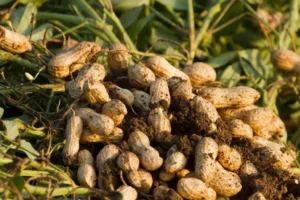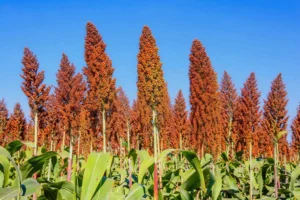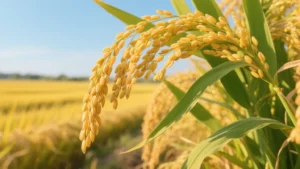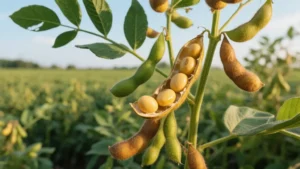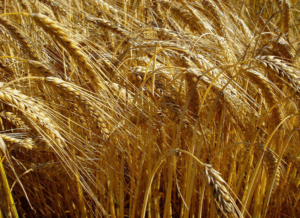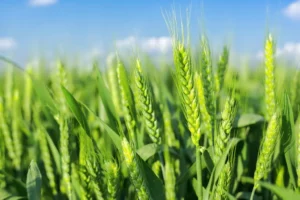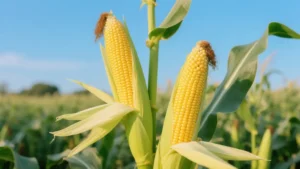Crop: Sorghum
Overview
Sorghum Crop Management Recommendations
✨ Use Resistant Varieties: Select disease/pest-resistant hybrids; complement with Difenoconazole 3% SC to control seedling blight, Rhizoctonia rot.
✨ Crop Rotation: For post-harvest weed control, use Glyphosate 41% SL to tackle annual and perennial weeds.
✨ Field Monitoring: Detect early diseases (e.g., anthracnose); spray Chlorothalonil 75% WP to combat fungal diseases.
✨ Timely Chemical Application: At economic thresholds, use Imazethapyr 240g/L SL (Vezir® 240 SL) for weeds, Lambda-cyhalothrin 2.5% EC for aphids.
✨ Good Agronomic Practices: Regularly spray Mancozeb 80% WP to prevent diseases like leaf spot.
✨ Post-Harvest Sanitation: Treat fields with Thiram 50% WP post-harvest to reduce overwintering pests/pathogens.
Common Sorghum Diseases
1. Sorghum Rust (Fungal)
-
Pathogen: Puccinia purpurea
-
Symptoms: Reddish-brown leaf pustules; leaves yellow and drop.
-
Control: Triadimefon 25% EC (750-1125ml/ha, 10-day intervals, 2 sprays).
2. Sorghum Anthracnose (Fungal)
-
Pathogen: Colletotrichum sublineola
-
Symptoms: Brown leaf lesions (gray centers, purple edges); leaf death.
-
Control: Mancozeb 80% WP (2250-3000g/ha, protective effect).
3. Sorghum Downy Mildew (Fungal)
-
Pathogen: Peronosclerospora sorghi
-
Symptoms: Yellow leaf stripes; white mold; stunted plants, deformed panicles.
-
Control: Seed treatment with Metalaxyl 35% WS (1:500 ratio); spray Fosetyl-Aluminium 40% SC (1200-1500ml/ha).
4. Bacterial Streak Disease
-
Pathogen: Xanthomonas campestris pv. holcicola
-
Symptoms: Brown vein streaks; leaf drying; bacterial ooze in humidity.
-
Control: Zinc Thiazole 40% SC (1500-2250ml/ha, 7-10-day intervals, 2-3 sprays).
Common Sorghum Pests
1. Sorghum Stem Borer
-
Damage: Larvae bore into stems, causing lodging and poor grain filling; 30-50% yield loss.
-
Control: Lambda-cyhalothrin 25g/L EC (300-450ml/ha, spray stems); or Chlorantraniliprole 0.5% GR (15-20kg/ha, seed treatment).
2. Sorghum Aphid
-
Damage: Suck sap, cause leaf yellowing; transmit viruses.
-
Control: Imidacloprid 70% WDG (15-22.5g/ha) when 10-15 aphids/plant; or Thiamethoxam 25% WDG (30g/ha, 15-day efficacy).
3. Sorghum Leaf Beetle
-
Damage: Adults chew leaves; larvae harm roots, stunting seedlings.
-
Control: Fenvalerate 20% EC (375-525ml/ha, adult spray); Chlorpyrifos 10% GR (30-45kg/ha, root application for larvae).
4. Sorghum Thrips
-
Damage: Scrape young leaves, causing silvering and curling; weakens seedlings.
-
Control: Thiamethoxam 25% SC (150-225ml/ha, seedling spray); or Thiamethoxam 30% FS (1:500 seed treatment).
Common Weeds in Sorghum Fields
1. Large Crabgrass (Digitaria sanguinalis)
-
Type: Monocot weed
-
Harm: Fast-growing, competes for resources; hosts pests/diseases.
-
Control: Quizalofop-P-ethyl 5% EC (750-900ml/ha, spray at sorghum 3-5 leaf stage).
2. Redroot Pigweed (Amaranthus retroflexus)
-
Type: Dicot weed
-
Harm: Drought-tolerant, shades sorghum; causes 15-20% yield loss.
-
Control: Atrazine 38% SC (1500-1800ml/ha, spray at weed 2-4 leaf stage).
3. Green Foxtail (Setaria viridis)
-
Type: Monocot weed
-
Harm: Tillers heavily, increases humidity; spreads via seeds.
-
Control: Metolachlor 72% EC (1200-1500ml/ha, pre-emergence); or Clethodim 12% EC (450-600ml/ha, seedling stage).
4. Cocklebur (Xanthium strumarium)
-
Type: Dicot weed
-
Harm: Resembles sorghum seedlings; burs affect harvest.
-
Control: Acetochlor 90% EC (900-1125ml/ha, pre-emergence); or 2,4-D Butylate 72% EC (300-450ml/ha, post-emergence).















